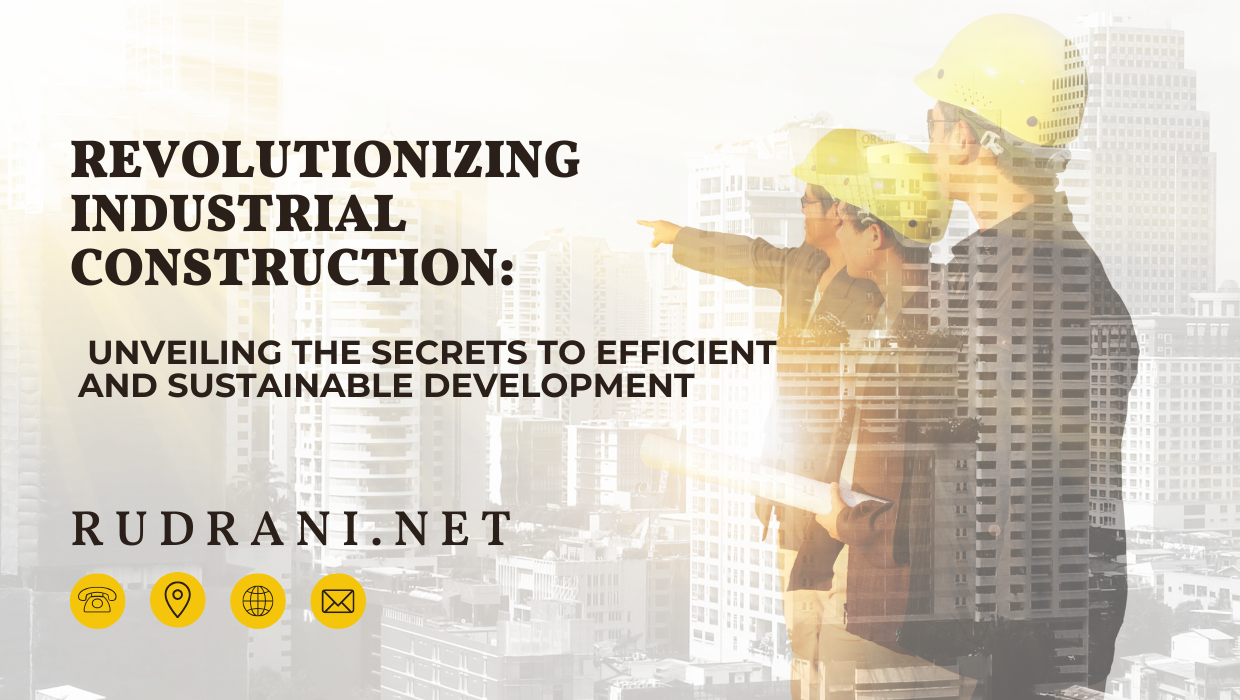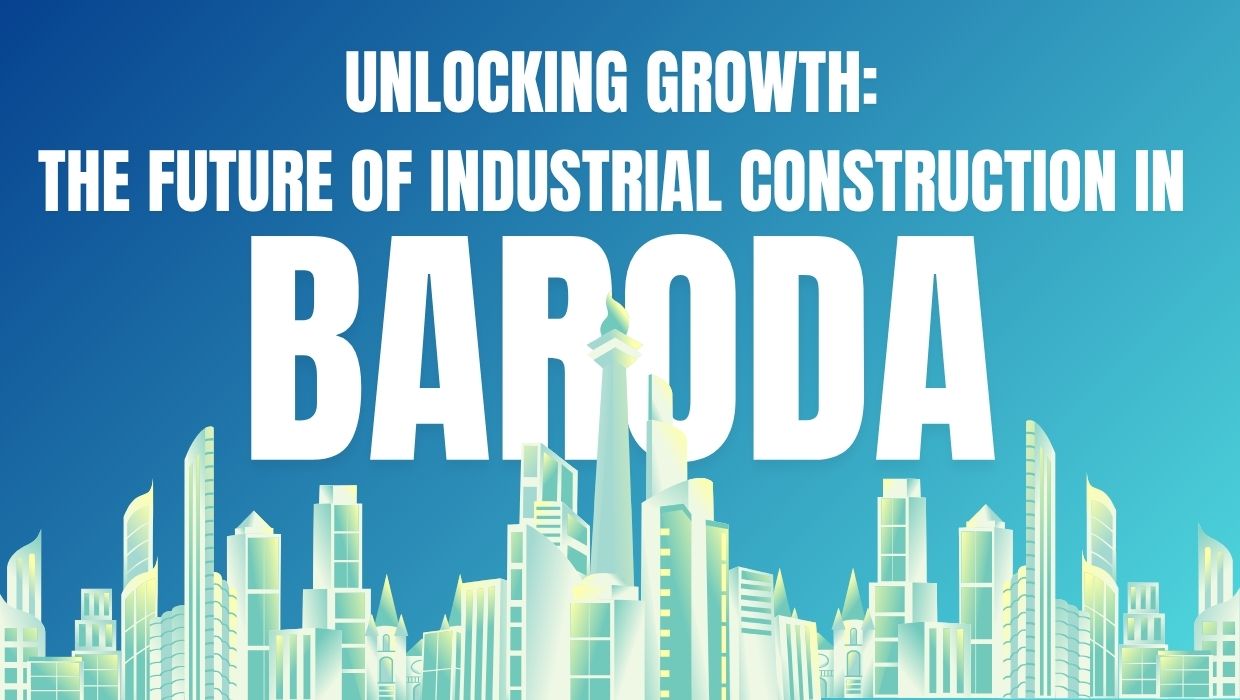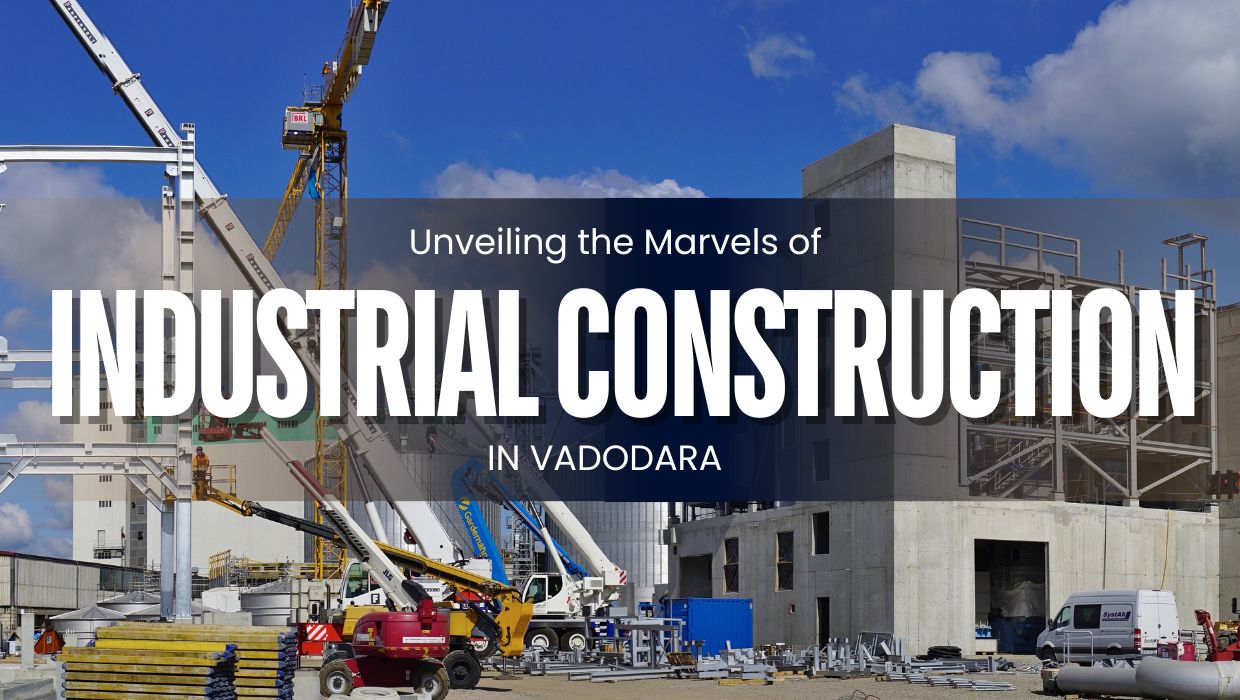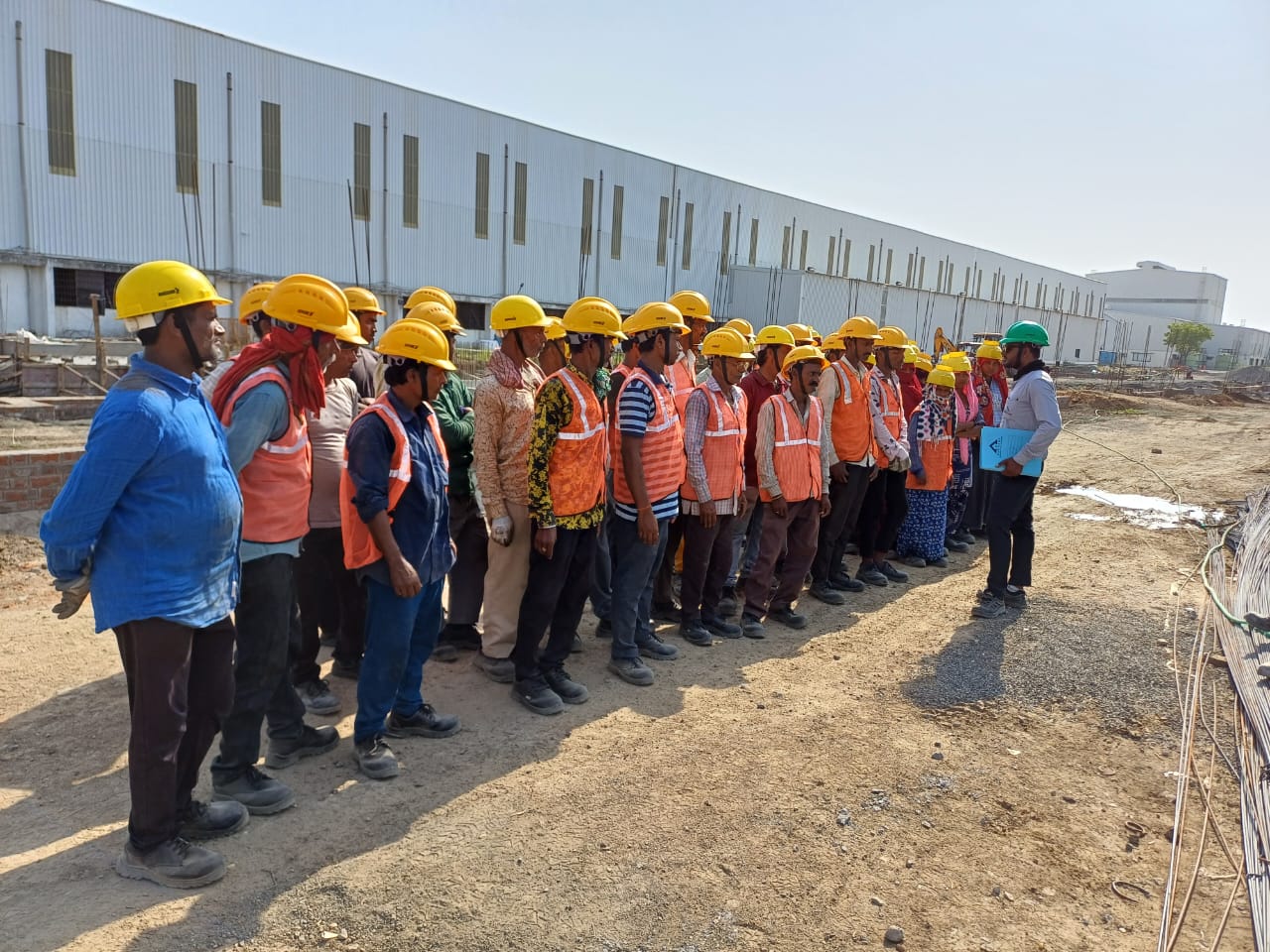
In the fast-paced world of industrial construction, efficiency and sustainability are becoming increasingly important. Companies are realizing that there is immense value in embracing new technologies and innovative approaches to streamline processes and minimize their environmental impact. But what are the secrets to achieving efficient and sustainable development in this industry?
In this article, we will delve into the revolutionary advancements that are reshaping the landscape of industrial construction. From cutting-edge building materials to state-of-the-art automation systems, we will uncover the tools and techniques that are driving efficiency and sustainability to new levels.
Through a careful analysis of case studies and industry trends, we will highlight the best practices employed by leading companies to optimize their operations and achieve remarkable results. Discover how integrating renewable energy solutions, optimizing supply chains, and implementing green building practices are not only reducing costs but also creating a greener and more sustainable future for the industrial construction sector.
Get ready to explore the secrets behind the revolutionary transformation taking place in industrial construction and learn how your company can stay ahead in this ever-evolving industry.
The need for efficient and sustainable development in industrial construction
The industrial construction sector stands at a critical juncture, where the demand for efficiency and sustainability has never been more pressing. As global populations grow and urbanization accelerates, the need for robust infrastructures is paramount. However, traditional construction methods often come with high environmental costs and inefficiencies that are no longer acceptable in an age where sustainability is a growing concern. By prioritizing efficient and sustainable development, the industry can address these challenges while meeting the needs of society.
Efficiency in industrial construction translates to the optimal use of resources, time, and manpower, which directly impacts the bottom line. The conventional approaches that have governed construction for decades are increasingly seen as inadequate, prompting a shift toward more innovative solutions. Sustainable practices not only mitigate environmental impact but also enhance productivity by reducing waste and improving project timelines. Thus, the integration of efficiency and sustainability becomes indispensable for the industry to thrive in a competitive market.
Moreover, regulatory pressures and societal expectations are driving the transformation within industrial construction. Governments and clients are now demanding that projects adhere to stringent environmental standards, pushing companies to adopt greener practices. This evolution is not only about compliance; it represents a significant opportunity for companies to differentiate themselves in the marketplace. Investing in sustainable development fosters business resilience and opens new avenues for growth, ultimately leading to a more sustainable future for the industry.
Current challenges in industrial construction
Despite the compelling need for change, industrial construction faces numerous challenges that hinder the adoption of efficient and sustainable practices. One of the primary obstacles is the inertia of traditional methodologies. Many companies are entrenched in established processes, making it difficult to embrace innovative technologies and practices. This resistance can lead to inefficiencies that waste time and resources, ultimately impacting project outcomes and profitability.
Additionally, the skilled labor shortage poses significant challenges in the construction industry. As experienced workers retire, there is a lack of new talent to fill these roles, leading to increased labor costs and project delays. This shortage can stifle innovation, as companies may not have the expertise necessary to implement advanced technologies and sustainable practices. The challenge is compounded by the rapid pace of technological advancement, which can overwhelm companies that are already struggling to keep up with their current projects.
Furthermore, supply chain complexities and the need for effective collaboration among stakeholders complicate the path to sustainable construction. The industrial construction process involves multiple parties, including architects, engineers, contractors, and suppliers, each of whom must work together to achieve common goals. Miscommunication and lack of coordination can lead to inefficiencies and waste, undermining efforts to enhance sustainability. Addressing these challenges is crucial for the industry to evolve and meet the demands of a more sustainable future.
Innovations and technologies revolutionizing industrial construction
The industrial construction landscape is undergoing a profound transformation, driven by a wave of innovations and technologies designed to enhance efficiency and sustainability. Among these, Building Information Modeling (BIM) has emerged as a game-changer, allowing for the digital representation of physical and functional characteristics of buildings. BIM enables stakeholders to collaborate more effectively, identify potential issues early in the design process, and optimize resource allocation. This technology not only streamlines construction processes but also reduces waste and improves sustainability by facilitating better decision-making.
Another significant innovation is the use of prefabrication and modular construction techniques. These methods involve assembling components off-site in a controlled environment before transporting them to the construction site for installation. This approach minimizes on-site waste and reduces construction time, leading to significant cost savings and enhanced efficiency. Moreover, prefabricated components can be designed with sustainable materials, further promoting environmental responsibility within the industry.
Automation and robotics are also playing a crucial role in revolutionizing industrial construction. From drones conducting site surveys to robotic arms assisting with repetitive tasks, these technologies increase productivity and accuracy while reducing the potential for human error. Automated systems can also monitor environmental conditions and energy use, providing real-time data that can help teams make informed decisions to enhance sustainability. The integration of these cutting-edge technologies signals a shift toward a more efficient and sustainable future in industrial construction.
Sustainable practices in industrial construction
Sustainable practices are becoming integral to the industrial construction sector, driven by the need to reduce environmental impact and enhance resource efficiency. One of the most prominent sustainable practices is the use of green building materials. These materials, which may include recycled, reclaimed, or rapidly renewable resources, contribute to reducing the carbon footprint of construction projects. By prioritizing sustainable sourcing and minimizing waste, companies can significantly lower their environmental impact while also appealing to environmentally conscious clients.
Energy efficiency is another key aspect of sustainable construction. Implementing energy-efficient designs and technologies, such as advanced insulation, energy-efficient HVAC systems, and renewable energy sources like solar panels, can drastically reduce a building’s energy consumption. Additionally, incorporating smart building technologies allows for real-time monitoring and optimization of energy use, further enhancing sustainability. By designing buildings that consume less energy and utilize renewable energy sources, companies are not only reducing operational costs but also contributing to a more sustainable future.
Water conservation practices are also critical in the quest for sustainability. The construction industry is known for its significant water usage, which can lead to resource depletion and environmental degradation. Implementing strategies such as rainwater harvesting, greywater recycling, and efficient irrigation systems can help mitigate water-related issues. By adopting these practices, companies can reduce their water footprint and promote a more responsible use of this precious resource, ultimately contributing to the overall sustainability of industrial construction.
Benefits of efficient and sustainable development in industrial construction
Embracing efficient and sustainable development in industrial construction offers a myriad of benefits that extend beyond environmental considerations. First and foremost, these practices lead to cost savings. By optimizing resource use and minimizing waste, companies can significantly reduce their operational expenses. Efficient construction processes also translate to shorter project timelines, allowing businesses to complete projects faster and increase their profitability. The financial advantages of adopting sustainable practices are compelling, making it a wise investment for companies looking to enhance their bottom line.
In addition to financial benefits, adopting efficient and sustainable practices fosters a positive corporate reputation. Clients and stakeholders are increasingly prioritizing sustainability, and companies that demonstrate a commitment to environmentally responsible practices are more likely to attract new business. By positioning themselves as industry leaders in sustainability, companies can differentiate themselves in a crowded market and build lasting relationships with clients who share similar values. This reputation not only drives immediate business success but also contributes to long-term brand loyalty.
Furthermore, efficient and sustainable development enhances employee satisfaction and productivity. Workers are increasingly drawn to companies that prioritize sustainability, as it aligns with their personal values. By fostering a work environment that emphasizes innovation and responsibility, companies can attract top talent and retain skilled workers. Moreover, efficient processes reduce stress and increase job satisfaction, as employees are empowered to contribute to meaningful projects that have a positive impact on the environment and society.
Case studies of successful efficient and sustainable industrial construction projects
Examining successful case studies provides valuable insights into the practical application of efficient and sustainable practices in industrial construction. One notable example is the construction of the Bullitt Center in Seattle, often referred to as the “greenest commercial building in the world.” This project incorporated a range of sustainable features, including solar panels, rainwater harvesting systems, and energy-efficient designs. The Bullitt Center not only achieved net-zero energy consumption but also serves as a living laboratory for sustainable building practices, inspiring others in the industry to follow suit.
Another exemplary project is the IKEA distribution center in Belgium, which showcases the benefits of prefabrication and modular construction methods. By utilizing off-site fabrication techniques, the project minimized on-site waste and reduced construction time by 30%. Additionally, the building was designed with energy-efficient systems and sustainable materials, resulting in a facility that significantly lowers energy consumption and operational costs. This case demonstrates how innovative construction methods can lead to successful outcomes while promoting sustainability.
Finally, the Tesla Gigafactory in Nevada is a prime example of integrating advanced technologies and sustainable practices in industrial construction. This massive facility is designed to produce lithium-ion batteries with a focus on sustainability. The construction process prioritized the use of renewable energy sources, energy-efficient designs, and sustainable materials. Tesla’s commitment to sustainability is evident not only in the factory’s operations but also in its construction approach, highlighting how large-scale projects can successfully embrace efficient and sustainable development.
Implementing efficient and sustainable practices in industrial construction
To implement efficient and sustainable practices effectively, companies must adopt a strategic approach that involves multiple stakeholders. First, leadership commitment is crucial. Executives and project managers must champion sustainability initiatives and allocate resources to support innovation. Establishing a clear vision and goals for sustainability can guide decision-making and foster a culture of accountability within the organization. By prioritizing sustainability at the highest levels, companies can create an environment that encourages employees to contribute to these initiatives.
Training and education are also essential components of successful implementation. Employees at all levels should receive training on sustainable practices, technologies, and methods relevant to their roles. This knowledge equips workers to make informed decisions that align with the company’s sustainability goals. Additionally, fostering a culture of continuous learning and improvement encourages employees to share ideas and contribute to innovative solutions that enhance efficiency and sustainability.
Finally, collaboration and communication among stakeholders are vital for successful implementation. Engaging architects, engineers, contractors, and suppliers early in the project lifecycle fosters a collaborative environment where ideas can be shared and challenges addressed. Utilizing technologies such as BIM can facilitate better communication and coordination among teams, ensuring that everyone is aligned with the project’s sustainability objectives. By fostering collaboration, companies can optimize processes, reduce waste, and achieve their sustainability goals more effectively.
Future trends in industrial construction
As the industrial construction sector evolves, several trends are emerging that are poised to shape the future of efficient and sustainable development. One prominent trend is the increasing adoption of digital technologies. The integration of artificial intelligence, machine learning, and the Internet of Things (IoT) is revolutionizing construction processes, enabling companies to gather and analyze vast amounts of data. These technologies can enhance decision-making, optimize resource allocation, and improve project outcomes, leading to greater efficiency and sustainability.
Another trend is the growing emphasis on circular economy principles in construction. The traditional linear model of “take-make-dispose” is being replaced by a circular approach that promotes the reuse and recycling of materials. This shift encourages companies to design buildings with the end of their lifecycle in mind, reducing waste and minimizing environmental impact. Embracing circular economy principles not only enhances sustainability but also creates new business opportunities in material recovery and reuse.
Lastly, the focus on resilience and adaptability is becoming increasingly important in industrial construction. As climate change and natural disasters pose significant risks, companies are recognizing the need to design and construct buildings that can withstand these challenges. Incorporating resilient design principles and sustainable materials can enhance a building’s durability, reduce its environmental impact, and ensure its long-term viability. This trend underscores the importance of proactive planning and innovation in creating a sustainable future for industrial construction.
Conclusion: The future of efficient and sustainable industrial construction
In conclusion, the future of industrial construction hinges on the successful integration of efficiency and sustainability. As the industry faces growing pressures from regulatory bodies, clients, and society, adopting innovative technologies and sustainable practices will be essential for thriving in this competitive landscape. Companies that embrace these changes will not only enhance their operational efficiency but also contribute to a more sustainable future for the planet.
The journey toward efficient and sustainable industrial construction has its challenges; however, the potential benefits far outweigh the obstacles. The advantages of adopting sustainable practices are compelling, from cost savings and improved corporate reputation to enhanced employee satisfaction. By examining successful case studies and implementing best practices, companies can pave the way for a brighter future in construction.
As we look ahead, the industry trends indicate a promising shift toward a more sustainable and resilient construction sector. By prioritizing innovation, collaboration, and a commitment to sustainability, the industrial construction industry can revolutionize itself, ultimately creating a lasting impact on the environment and society as a whole. The secrets to efficient and sustainable development are not just strategies; they represent a vital transformation that will define the future of industrial construction.














This blog offers a thoughtful perspective on the evolving industrial construction landscape and highlights the urgent need for sustainable and efficient solutions. The shift toward greener practices is essential not only for meeting regulatory demands but also for improving resource management and project timelines.
The discussion around challenges like traditional process inertia and labor shortages resonates deeply—these are hurdles the industry must address to foster meaningful innovation. Collaboration and effective communication among stakeholders are clearly key to driving this transformation. Great insights into how the sector can move toward a smarter, more sustainable future!